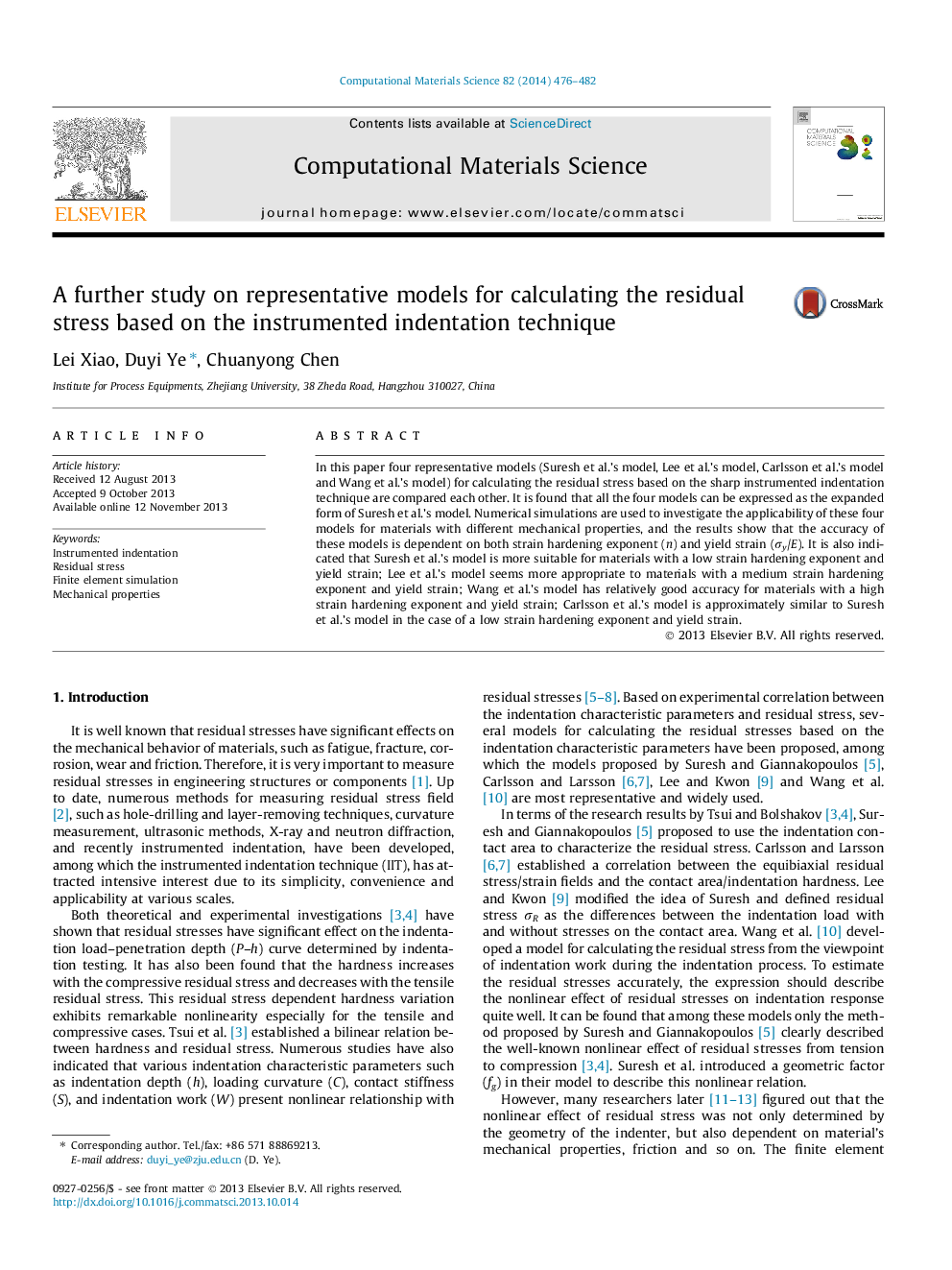| Article ID | Journal | Published Year | Pages | File Type |
|---|---|---|---|---|
| 7961239 | Computational Materials Science | 2014 | 7 Pages |
Abstract
In this paper four representative models (Suresh et al.'s model, Lee et al.'s model, Carlsson et al.'s model and Wang et al.'s model) for calculating the residual stress based on the sharp instrumented indentation technique are compared each other. It is found that all the four models can be expressed as the expanded form of Suresh et al.'s model. Numerical simulations are used to investigate the applicability of these four models for materials with different mechanical properties, and the results show that the accuracy of these models is dependent on both strain hardening exponent (n) and yield strain (Ïy/E). It is also indicated that Suresh et al.'s model is more suitable for materials with a low strain hardening exponent and yield strain; Lee et al.'s model seems more appropriate to materials with a medium strain hardening exponent and yield strain; Wang et al.'s model has relatively good accuracy for materials with a high strain hardening exponent and yield strain; Carlsson et al.'s model is approximately similar to Suresh et al.'s model in the case of a low strain hardening exponent and yield strain.
Related Topics
Physical Sciences and Engineering
Engineering
Computational Mechanics
Authors
Lei Xiao, Duyi Ye, Chuanyong Chen,
